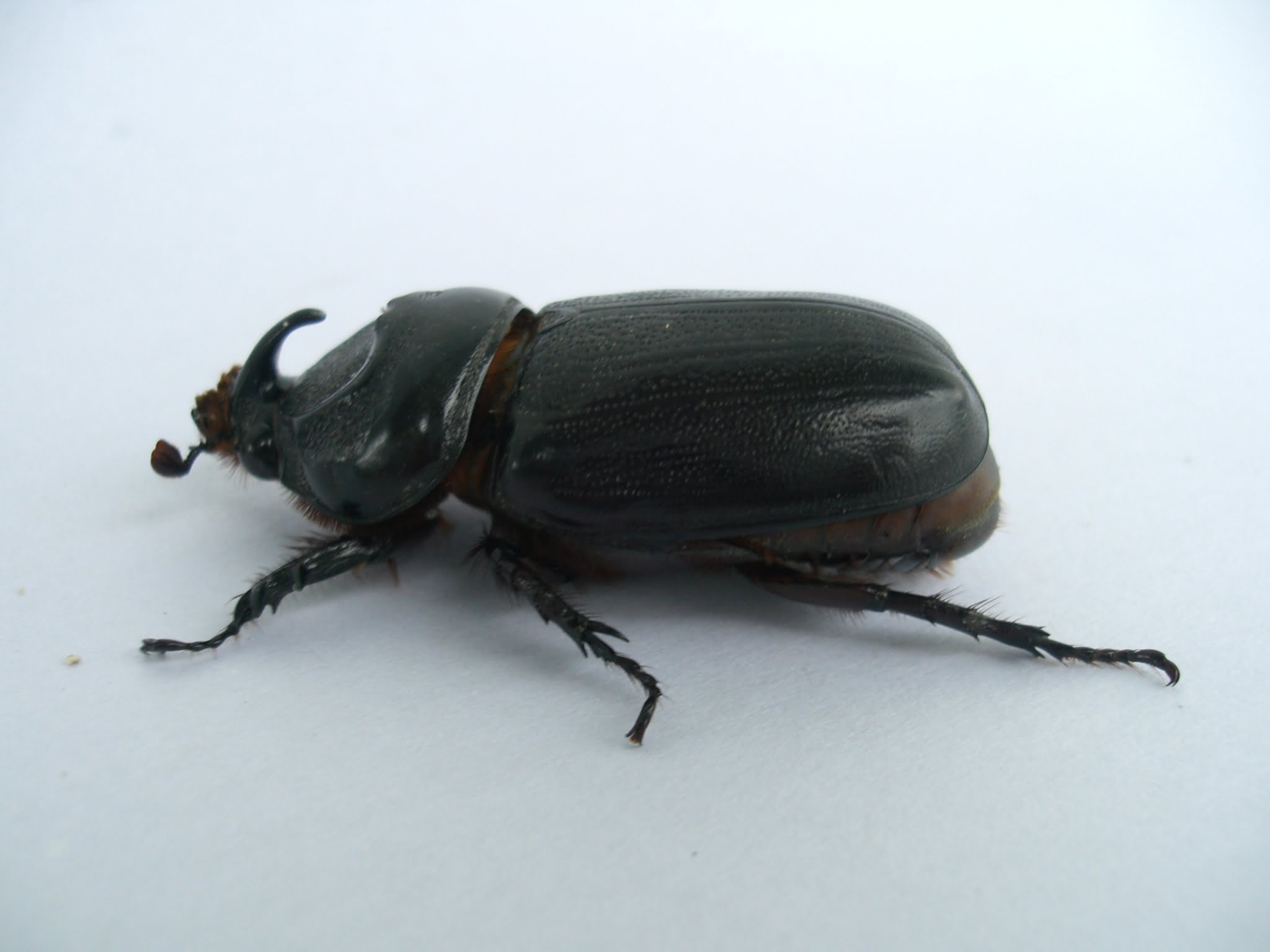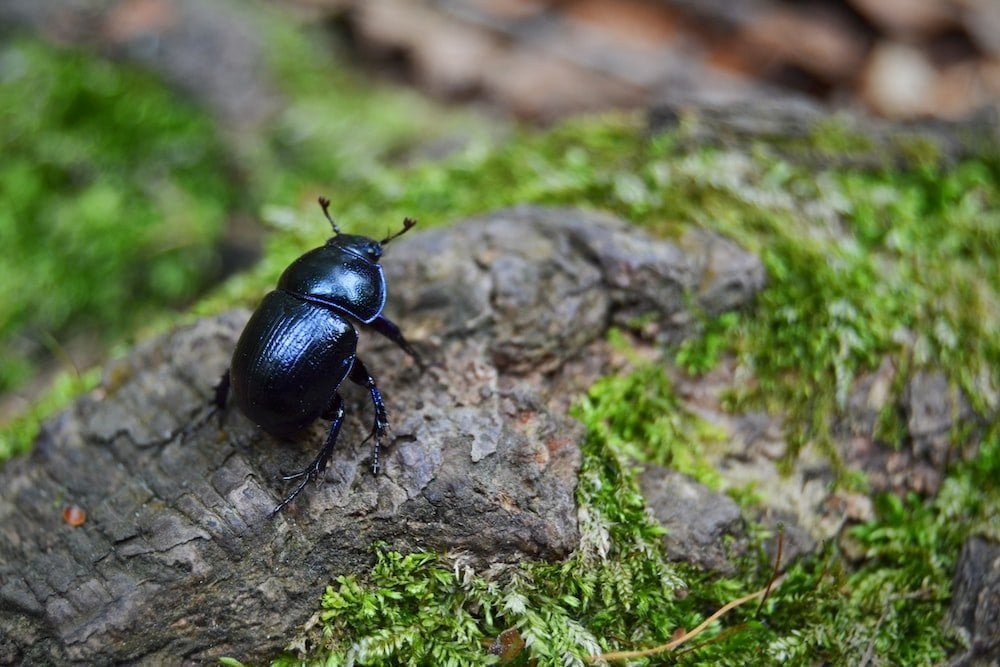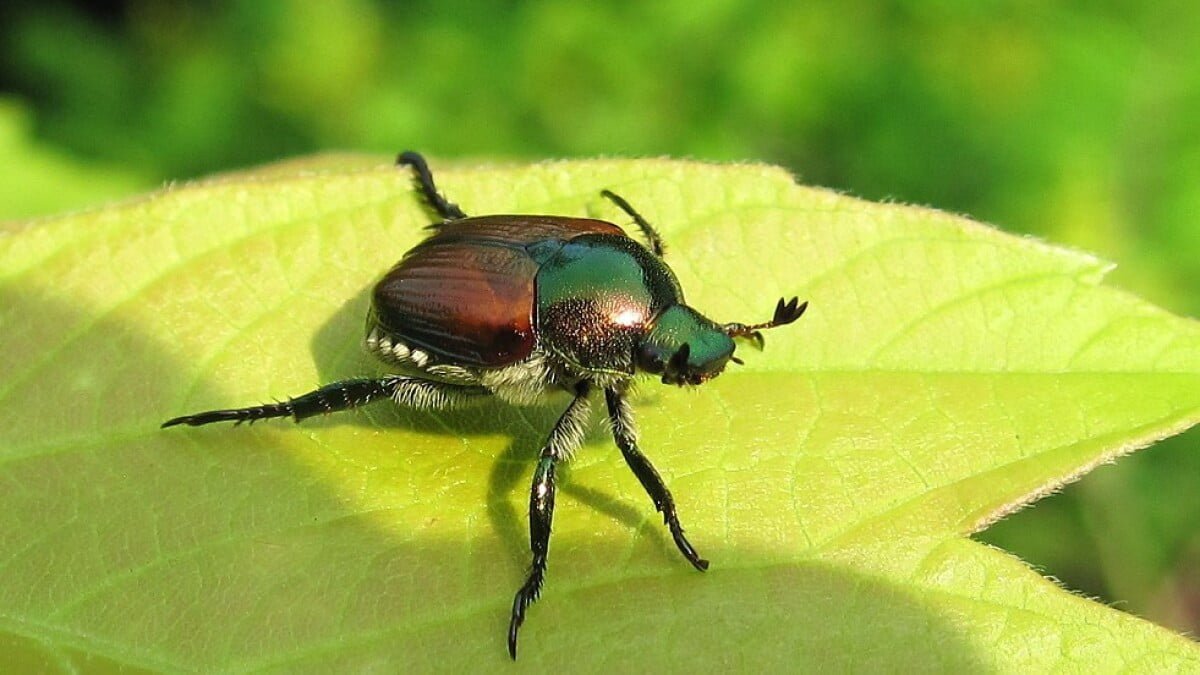Beetle insect Facts, FAQs, Behaviour, Habitat, Conservation and more
 Beetle insect Facts
Beetle insect FactsBeetle insect Facts | Description | Distribution and Habitat | Conservation | Behaviour and Ecology | Interaction with Human | Cultural | Interesting facts | frequently asked questions about Beetle
Beetles, the most diverse group of insects on earth, are a fascinating and captivating subject for nature enthusiasts. With over 400,000 identified species, they range in size from tiny sap beetles to giant Goliath beetles. These six-legged creatures have been around for over 300 million years and can be found in nearly every habitat on the planet. From their hard exoskeleton to their intricate patterns and colors, beetles are truly remarkable. Join us as we explore the fascinating world of beetles, starting with the most commonly recognized beetle of all – the insect beetle.
Taxonomy of Beetle
| Kingdom | Animalia |
|---|---|
| Phylum | Arthropoda |
| Class | Insecta |
| Order | Coleoptera |
| Suborder | Polyphaga |
| Infraorder | Cucujiformia |
| Superfamily | Tenebrionoidea |
| Family | Various |
| Genus | Various |
| Species | Various |
Morphology of Beetle
| Morphological Feature | Description |
|---|---|
| Size | Varies greatly depending on the species, can range from 0.5 mm to over 17 cm in length |
| Body Shape | Oval or elongated with a hard exoskeleton |
| Antennae | Segmented, typically short and clubbed |
| Mouthparts | Chewing type |
| Wings | Two pairs of wings, with the front pair (elytra) hardened and protective, covering the second pair of wings |
| Legs | Six legs, typically adapted for walking, running, or digging |
| Eyes | Usually two compound eyes, sometimes with additional simple eyes |
| Colors | Varies greatly depending on the species, can be black, brown, green, metallic, or brightly colored |

Description of Beetle
The insect beetle is a fascinating and diverse group of insects, with over 400,000 identified species found worldwide. Beetles belong to the order Coleoptera, which means “sheathed wing” in Greek, referring to their hardened forewings (elytra) that protect their delicate hindwings. These insects have a hard exoskeleton and six jointed legs that are typically adapted for walking, running, or digging.
In terms of size, the insect beetle can range from tiny species that are less than 1 millimeter long, to larger species that can grow up to 17 centimeters in length. Their body shapes can vary from oval to elongated, and they have two pairs of wings, with the front pair being hardened and protective, and the second pair being used for flying.
The mouthparts of the insect beetle are of the chewing type, which means they are adapted for biting and grinding food. They also have segmented antennae, typically short and clubbed, which are used for sensing their environment.
The color of the insect beetle varies greatly depending on the species, and can be black, brown, green, metallic, or brightly colored. Their eyes are usually two compound eyes, although some species may have additional simple eyes as well.
Overall, the insect beetle is a fascinating and diverse group of insects that have adapted to a wide range of habitats and lifestyles. From their hard exoskeleton to their intricate patterns and colors, these insects are truly remarkable and worthy of further study and appreciation.
Distribution and habitat of Beetle
The insect beetle is a highly diverse group of insects that can be found in nearly every habitat on the planet. With over 400,000 identified species, they are one of the most successful and widespread groups of insects in the world.
The distribution of the insect beetle varies greatly depending on the species. While some species are highly specialized and may only be found in specific regions or habitats, others have adapted to a wide range of environments and can be found in almost every part of the world.
In general, the insect beetle is found in terrestrial habitats such as forests, grasslands, deserts, and wetlands. Some species are adapted to aquatic environments, and can be found in freshwater or marine habitats.
The specific habitat requirements of the insect beetle can vary depending on the species. Some species prefer to live in trees or shrubs, while others are ground-dwelling and can be found in soil, leaf litter, or under rocks. Some species have even adapted to live in harsh environments such as deserts, where they are able to conserve water and withstand extreme temperatures.
Overall, the insect beetle is a highly adaptable group of insects that can be found in a wide range of habitats and environments. From tropical rainforests to arid deserts, these insects have evolved to thrive in some of the most challenging and diverse habitats on the planet.
Behaviour and Ecology of Beetle
The insect beetle is a highly diverse group of insects, with over 400,000 identified species found worldwide. While their behavior and ecology can vary greatly depending on the species, there are some general patterns that can be observed.
- Feeding behavior: Most species of beetle are herbivorous, feeding on plants, fungi, or other organic matter. Some species are also carnivorous, feeding on other insects or even small vertebrates. Many beetles have specialized mouthparts that allow them to chew or grind their food.
- Reproduction: Beetles have a wide range of reproductive strategies. Some species lay their eggs in soil or decaying plant matter, while others lay their eggs on the surface of water or even inside other insects. Some species engage in elaborate courtship behaviors before mating, while others mate opportunistically.
- Social behavior: While most species of beetle are solitary, some exhibit social behavior, living in groups or colonies. For example, some species of dung beetle work together to roll and bury dung, while some species of bark beetle form large aggregations in trees.
- Defense mechanisms: Beetles have a variety of defense mechanisms to protect themselves from predators. Some species are able to release noxious chemicals or toxins, while others have spines or other physical structures that make them difficult to eat. Some species are also able to mimic the appearance of other, less palatable insects in order to avoid predation.
- Ecological role: Beetles play important ecological roles in many ecosystems. They are important decomposers, breaking down dead plant matter and recycling nutrients back into the soil. They also serve as prey for other animals, and some species, like pollinating beetles, play a key role in plant reproduction.
Overall, the behavior and ecology of the insect beetle is highly diverse and complex, with each species having its own unique adaptations and strategies for survival. Their importance in many ecosystems makes them an important group of insects to study and understand.
Conservation of Beetle
Beetles are a diverse group of insects that play important roles in many ecosystems. While some species may be considered pests in certain situations, others are beneficial and important for maintaining ecological balance. As such, there are efforts to conserve and cultivate certain species of beetles.
Conservation efforts may focus on protecting the habitats and food sources of particular beetle species. This can involve measures such as preserving natural habitats, reducing pesticide use, and promoting sustainable agricultural practices. Some species of beetle may also be bred in captivity and released into the wild to bolster populations.
Cultivation efforts may focus on using certain species of beetle for specific purposes. For example, some species of beetle are used for biological control, helping to control populations of pest insects in agricultural settings. Other species may be used for their valuable products, such as silk or shellac.
Overall, the conservation and cultivation of beetles can be important for preserving biodiversity and promoting sustainable practices. While certain species may be considered pests or nuisances in certain situations, it is important to recognize the ecological roles that beetles play and work towards balancing their populations in a way that benefits both humans and the environment.
Interaction with Human of Beetle
Some species of beetles can have interactions with humans, both positive and negative. Here are some examples:
- Agricultural pests: Some species of beetles, such as the Colorado potato beetle or the boll weevil, can be significant agricultural pests, causing damage to crops and reducing yields.
- Beneficial insects: Some species of beetles, such as ladybugs and ground beetles, can be beneficial to humans by eating other pest insects or helping to decompose organic matter.
- Economic importance: Certain species of beetle have economic importance, such as the use of the cochineal beetle for red dye or the use of the Japanese beetle in biological control.
- Health concerns: Some species of beetles can cause health concerns, such as the blister beetle which can secrete a toxic substance that can cause skin irritation.
- Cultural significance: Some species of beetle have cultural significance in certain cultures, such as the scarab beetle in ancient Egyptian mythology.
Overall, the interactions between humans and beetles can be varied and complex. While some species may be considered pests or have negative impacts, others can be beneficial or even have cultural significance. Understanding the role that beetles play in different contexts can help to promote sustainable and responsible interactions with these important insects.
Cultural and Historical Significance of Beetle
The beetle has cultural and historical significance in many cultures around the world. Here are some examples:
- Ancient Egypt: The scarab beetle was a symbol of rebirth and renewal in ancient Egyptian culture. It was believed to represent the god Khepri, who was responsible for the rising of the sun each day.
- Japan: The Japanese rhinoceros beetle is highly valued in Japanese culture, where it is raised for fighting. It is considered a symbol of strength and resilience.
- China: The stag beetle is a popular insect in Chinese folklore, where it is associated with strength and bravery. It is also used in traditional medicine for its purported health benefits.
- Mexico: The cochineal beetle has been used for centuries by the indigenous people of Mexico as a source of red dye for textiles and other materials.
- Europe: The rose chafer beetle was highly prized in medieval Europe for its iridescent green and gold coloration, which was used in decorative art and jewelry.
Overall, the beetle has played an important role in the cultural and historical traditions of many societies. Its unique physical characteristics and ecological adaptations have inspired awe and admiration, while its use in traditional medicine, art, and industry has made it a valuable resource for human populations.
Explanatory Notes for Beetle
Beetles are a diverse group of insects that are found all over the world, in a wide range of habitats. Here are some explanatory notes on beetles:
- Diversity: Beetles are the largest group of insects, with over 400,000 known species. They come in a wide variety of shapes, sizes, and colors, and have evolved to fill a wide range of ecological niches.
- Anatomy: Beetles have a hard, shell-like exoskeleton that protects their body. Their forewings are modified to form a hard protective cover, called elytra, which protect their hind wings and help them fly. Beetles also have powerful jaws, which are used for feeding and defense.
- Ecological roles: Beetles play important roles in ecosystems as both predators and prey. Some species are herbivores and feed on plants, while others are carnivorous and feed on other insects. Beetles are also important decomposers, breaking down dead plant and animal matter.
- Economic importance: Beetles have significant economic importance for humans. Some species are pests of crops and forests, causing significant damage and economic losses. Other species are beneficial, providing important ecosystem services such as pollination and biological pest control.
- Cultural significance: Beetles have played important roles in many human cultures throughout history. They have been used as symbols of luck, strength, and resilience in art and literature, and have been featured in mythology and folklore around the world.
Overall, the explanatory notes for beetles cover their diversity, anatomy, ecological and economic roles, as well as their cultural significance.
Interesting facts about Beetle
Here are ten interesting facts about beetles:
- Beetles are one of the most diverse groups of insects, with over 400,000 identified species.
- The largest beetle in the world is the Goliath beetle, which can grow up to 4.3 inches (11 cm) long.
- Some species of beetles are bioluminescent, meaning they can produce their own light. The most famous example is the firefly.
- The bombardier beetle is capable of spraying hot, noxious chemicals from its abdomen to defend itself against predators.
- Some species of beetles can survive freezing temperatures by producing an antifreeze-like substance in their blood.
- Beetles are incredibly strong for their size. A rhinoceros beetle can carry over 800 times its own weight.
- The stag beetle has distinctive antler-like mandibles, which it uses to fight other males for mating rights.
- Some species of beetles, such as the deathwatch beetle, can cause significant damage to wooden structures and furniture.
- Beetles have been used in traditional medicine around the world for thousands of years, for their supposed healing properties.
- The scarab beetle was considered sacred by the ancient Egyptians, and was often depicted in their art and mythology as a symbol of rebirth and regeneration.
General queries or frequently asked questions about Beetle
What are beetles?
Beetles are a group of insects that belong to the order Coleoptera. They are characterized by their hard, shell-like exoskeletons, which protect their bodies.
How many species of beetles are there?
There are over 400,000 identified species of beetles, making them one of the most diverse groups of insects.
What do beetles eat?
The diet of beetles varies depending on the species. Some are herbivores and feed on plants, while others are carnivorous and feed on other insects. Some species also feed on dead plant and animal matter.
Where do beetles live?
Beetles are found all over the world, in a wide range of habitats. Some species are found in forests, while others live in deserts, grasslands, or aquatic environments.
What is the largest beetle in the world?
The Goliath beetle is the largest beetle in the world, and can grow up to 4.3 inches (11 cm) long.
What is the smallest beetle in the world?
The featherwing beetle is the smallest beetle in the world, and can be as small as 0.25 mm long.
Do beetles have any predators?
Yes, beetles have many predators, including birds, mammals, reptiles, and other insects.
Do beetles have any economic importance?
Yes, beetles have significant economic importance for humans. Some species are pests of crops and forests, causing significant damage and economic losses. Other species are beneficial, providing important ecosystem services such as pollination and biological pest control.
Are beetles used in traditional medicine?
Yes, beetles have been used in traditional medicine around the world for thousands of years, for their supposed healing properties.
Are any species of beetles endangered?
Yes, some species of beetles are endangered due to habitat loss, pollution, and other human activities. Conservation efforts are underway to protect these species and their habitats.
Conclusion
In conclusion, beetles are a diverse and fascinating group of insects with a wide range of adaptations, behaviors, and ecological roles. They have a significant impact on the world around us, both in terms of their economic importance and their role in ecosystems. While some species are considered pests and can cause significant damage, others provide important ecosystem services such as pollination and biological pest control. Despite their importance, many species of beetles are facing threats such as habitat loss, pollution, and climate change, and conservation efforts are necessary to protect them and their habitats. Overall, the study of beetles provides important insights into the complexity and diversity of the natural world.












